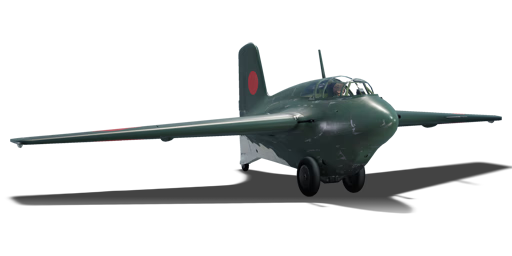



The Ki-200 Shūsui (秋水, Swinging Sword) was intended to be a license-built copy of the Me 163 Komet, but with shipping problems of getting a functional Me 163 as an example, Japanese engineers were tasked to reverse engineer both the plane and rocket engine from a flight operations manual and other limited documentation. With the project being one of the few joint ventures between the IJAAS and IJNAS, the Army wanted to redesign the fuselage while the Navy wanted to keep the German-proven frame, which eventually won by design and contracted to Mitsubishi to produce the design as J8M and Ki-200 for the Navy and Army respectively.
In War Thunder, it has been in the game since the start of the Open Beta Test prior to Update 1.27. It plays very similarly to its German brother, the Me 163 B, only offering little fuel, it has to gain altitude as soon as possible to afterward cut down on the throttle, idle in the sky, and hawk down on targets below the Ki-200 using gravity as speed and fuel. On top of limited fuel, trigger discipline is also necessary with limited ammo, armed with heavy-hitting 30 mm cannons, which can dispatch enemy air targets with a single hit. Maintaining altitude at all times is crucial for both combat and survival, allowing to, when out of fuel, glide back towards the airfield.
flaps
flaps
flaps
brake
| Belt | Belt filling | Armor penetration (mm) at a distance: | |||||
|---|---|---|---|---|---|---|---|
| 10 m | 100 m | 500 m | 1000 m | 1500 m | 2000 m | ||
| HEF/AP-T/HEF-I | 28 | 26 | 18 | 11 | 7 | 5 | |
| HEF-I/AP-T/AP-T/HEF/HEF | 28 | 26 | 18 | 11 | 7 | 5 | |
| HEF-I/AP-T/AP-T/AP-T/AP-T | 28 | 26 | 18 | 11 | 7 | 5 | |
| AP-T | 28 | 26 | 18 | 11 | 7 | 5 | |
| HEF | 3 | 3 | 3 | 3 | 3 | 3 | |












Flight performance |
|---|
Survivability |
|---|
Weaponry |
|---|